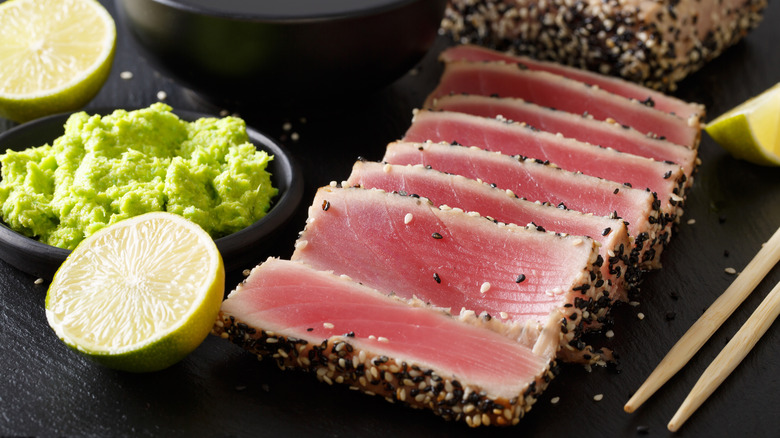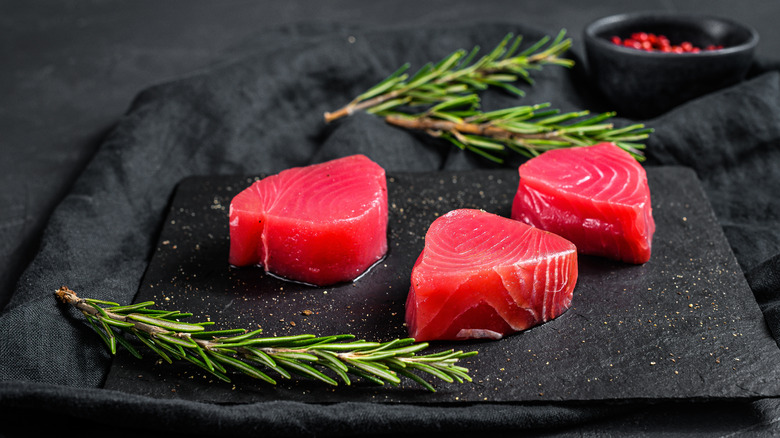The Easy Prep Tip That Will Help You Cook Tuna Evenly Every Time
When one thinks of ahi tuna, yellowfin tuna may come to mind. But, as AZ Animals explains, this Hawaiian term encompasses bigeye tuna as well. Both types of tuna pair well with poke bowls, salads, and roasted vegetables, per San-J, though their flavor profiles are quite different. Yellowfin is firm and tastes mild while bigeye has a pronounced richness to it, as well as butter-like flavors that are full of fat.
Searing ahi tuna in a pan is one of the more popular cooking methods. (Though to be fair, using a grill, an oven, or an air fryer are also suitable options, per AllRecipes.) About three or four minutes in a pan is all the tuna needs to cook to perfection, and that usually entails a doneness of either rare or medium-rare. Delighted Cooking says marinades that incorporate soy sauce, ginger, or other ingredients may also be used to flavor the tuna prior to cooking.
As easy as cooking ahi tuna is, it's not without potential pitfalls. One of these involves an unappealing contrast of dryness with a raw interior. Luckily, we've found an easy fix from Taste of Home that may result in more uniform cooking.
Room temperature tuna is key
So how does tuna end up dry and raw simultaneously anyhow? Well, according to Delighted Cooking, this is due to cold tuna. If you take it straight from the fridge and throw it into a pan, the inside will likely remain ice cold, which is a sharp contrast to the tuna's exterior. This results in tastes, textures, and of course, temperatures, that won't be too appetizing to the palate.
Taste of Home suggests the following easy fix: Bring the tuna to room temperature (this should only take about 30 minutes). That way, the temperature throughout the entirety of the tuna will be more equal, which means the inside and outside of the finished tuna will look a little more consistent.
It's also important to note that a hot pan should be used. This helps to create a crust on the tuna while the center cooks to perfection. Using lower temperatures usually leads to overcooked tuna, which results in rubber-like textures and flavors that are void of any moisture, via Worthy Recipe.
So whether you're searing ahi tuna for a sushi night or for a colorful poke bowl, be sure to use room-temperature tuna steaks instead of ice-cold ones. That way, the tuna will end up moist, tender, and bursting with flavor.

